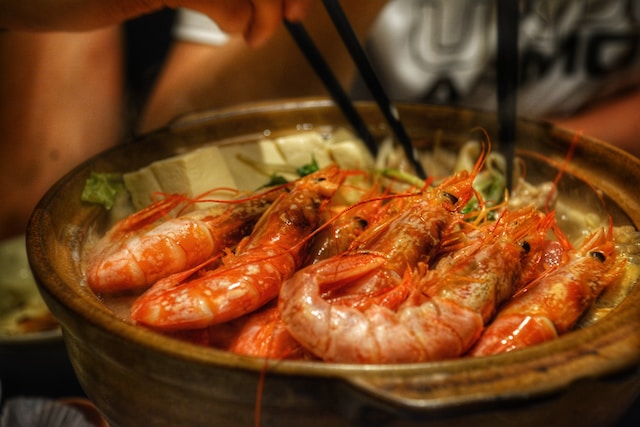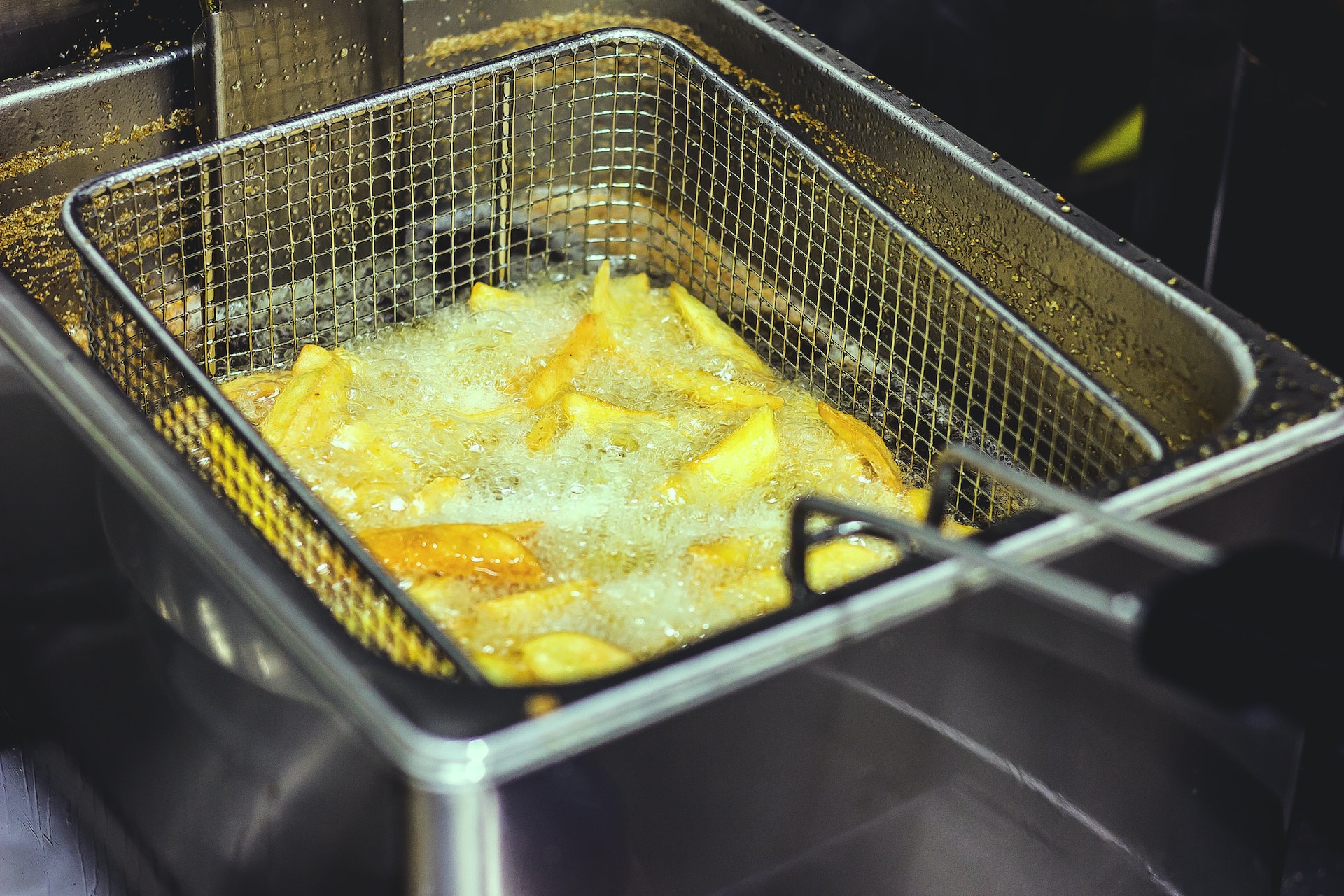When you order shrimp at a restaurant, have you ever wondered why they always seem to come with the tails still attached? It’s a common question that many people have, and there are several reasons why restaurants leave the tails on shrimp. In this article, we’ll explore some of those reasons and help you understand why this practice is so prevalent in the restaurant industry.
Culinary Reasons for Keeping Tails on Shrimp
Culinary experts suggest that keeping the tails on shrimp adds to the flavor and texture of the dish. The tail is a part of the shrimp that holds a lot of flavor and adds an additional element of texture to the dish. Here are some culinary reasons why restaurants keep the tails on shrimp:
Enhancing the Presentation of the Dish
Shrimps with tails intact, placed artistically on a dish, can make it look more elegant and presentable. Restaurants may want to give a sophisticated look to their dish, and leaving the tails on can add to the presentation.
Improving the Texture of the Dish
The tail of a shrimp is firm and crunchy compared to the rest of the shrimp’s body, which is tender and succulent. Leaving the tail on the shrimp can add an extra layer of texture to the dish, which can enhance the eating experience.
Adding to the Flavor of the Dish
The tail of the shrimp is a part of the shell, and it holds a lot of flavor. When the tail is cooked, it infuses the dish with a sweet and savory taste. Hence, leaving the tails on can enhance the overall flavor profile of the dish.
Facilitating Eating and Handling of Shrimp
Leaving the tails on the shrimp can also make it easier for diners to handle and eat the shrimp, especially in dishes that require picking up the shrimp with chopsticks or fingers. The tail can act as a handle that can make it easier to grip the shrimp and enjoy it without getting messy.
Adding to the Aroma of the Dish
The tail of a shrimp has a distinct aroma that is released when it is cooked. This aroma can add to the overall aroma of the dish, making it more appetizing and enticing. The scent of the shrimp tail can enhance the flavor and presentation of the dish.
These culinary reasons are why restaurants keep the tails on shrimp while cooking, but there might be other practical reasons as well. Let’s explore them in the following sections.
Practical Reasons for Keeping Tails on Shrimp
When you order shrimp at a restaurant, you might wonder why the tails are still attached to the shrimp. It may seem like an unnecessary inconvenience, but in fact, there are practical reasons why restaurants choose to serve shrimp with the tails on. In this section, we will explore some of the practical reasons behind this common practice.
- Easier to Cook
One of the main reasons why restaurants keep the tails on shrimp is that it makes them easier to cook. The tails provide a convenient handle for cooks to pick up the shrimp and flip them over while they are cooking. This makes it easier to ensure that the shrimp are cooked evenly on both sides, which is crucial for getting the perfect texture.
- Easier to Handle
In addition to making it easier to cook the shrimp, leaving the tails on also makes them easier to handle. When the tails are left intact, it is easier to pick up the shrimp with a fork or your fingers without having them slip out of your grasp. This can be particularly useful if you are eating shrimp with a sauce or dip, as it allows you to easily dip the shrimp into the sauce and get a good coating.
- Better Presentation
Another practical reason why restaurants leave the tails on shrimp is for presentation purposes. Shrimp with tails on simply look better on the plate, and this can be particularly important for higher-end restaurants where presentation is a key part of the dining experience. The tails add a visual element to the dish that can make it more appealing to customers.
- Avoids Cross-Contamination
Finally, leaving the tails on shrimp can help to prevent cross-contamination in the kitchen. When the tails are left on, it is easier to handle the shrimp without touching the part that will be eaten. This can help to reduce the risk of bacteria or other contaminants from getting onto the edible portion of the shrimp, which can help to keep customers safe and healthy.
Customer Preferences and Expectations
Restaurants have to keep in mind the preferences and expectations of their customers. Shrimp is a popular seafood item on many menus, and customers have their own preferences when it comes to the presentation of the dish. Some customers prefer to have the tail left on the shrimp, while others prefer it to be removed.
- Appearance and Presentation
Many people believe that leaving the tail on the shrimp makes the dish look more visually appealing. The tail adds a touch of elegance and sophistication to the dish. It also adds an element of freshness to the presentation, as it indicates that the shrimp has been cooked recently.
- Convenience and Ease of Eating
Leaving the tail on the shrimp can also be convenient for the customers. It provides a built-in handle that allows customers to hold the shrimp easily and dip it into sauces without getting their hands dirty. Removing the tail can also be a messy process, as customers may have to use their hands to peel the shrimp or use utensils.
- Cultural Traditions
In some cultures, leaving the tail on the shrimp is a tradition. In Asian cuisine, for example, leaving the tail on the shrimp is common as it is believed to be a sign of respect and gratitude towards the food. It is also considered a good luck symbol in some cultures.
- Perception of Freshness
Leaving the tail on the shrimp can also create the perception of freshness. Customers may believe that the shrimp was cooked and prepared recently if the tail is left on. This perception of freshness can enhance the overall dining experience for the customers.
Restaurants need to consider these factors when deciding whether to leave the tail on or remove it from the shrimp. Ultimately, it depends on the restaurant’s culinary style, cultural traditions, and customer preferences.
Cultural Significance
The practice of leaving the tails on shrimp has cultural significance in some countries. For example, in some Asian cultures, it is customary to leave the tails on shrimp as a sign of respect for the seafood and to show that the shrimp has not been overcooked.
In addition, some cultures believe that leaving the tails on shrimp enhances the flavor of the dish. The tail is believed to contain flavorful juices that are released during cooking and can add an extra layer of taste to the dish.
Furthermore, in some cultures, it is also considered impolite to eat shrimp with your fingers, and leaving the tail on provides a convenient handle to hold the shrimp while eating it with utensils.
Restaurants that cater to customers from these cultural backgrounds may leave the tails on shrimp as a sign of respect for their customers’ cultural traditions and preferences. By doing so, they not only show respect but also differentiate themselves from other restaurants that may not practice this tradition.
Sustainability and Environmental Impact
Keeping the tails on shrimp also has sustainability and environmental benefits. By leaving the tails on, chefs can ensure that the shrimp is consumed more completely, reducing waste. According to the United Nations Food and Agriculture Organization, roughly one-third of all seafood caught globally is wasted, with shrimp being one of the most commonly discarded species. By serving shrimp with the tails on, chefs can encourage diners to eat the entire shrimp, reducing the amount of food waste that ends up in landfills.
Additionally, removing the tails requires additional processing and handling, which can increase the carbon footprint of the food industry. By leaving the tails on, chefs can minimize the need for additional processing and handling, reducing the overall environmental impact of the dish.
Furthermore, shrimp tails are a rich source of chitin, a natural polymer that has a wide range of potential applications, including as a food preservative, agricultural fertilizer, and wound-healing agent. By leaving the tails on, chefs can contribute to the development of sustainable practices that make use of the entire shrimp, rather than just a portion of it. This can help to reduce the overall environmental impact of the food industry and support more sustainable and responsible practices.
Conclusion
In conclusion, there are several reasons why restaurants keep the tails on shrimp. From culinary and practical reasons to cultural significance and sustainability concerns, the decision to keep the tails on is based on a combination of factors. While some customers may prefer the convenience of not having to remove the tails, others appreciate the added flavor and visual appeal of leaving them intact. Additionally, sustainability and environmental concerns have led some restaurants to consider alternative options, such as using shell-on shrimp or sourcing from sustainable fisheries. Ultimately, the decision to keep the tails on or off comes down to the specific dish and the preferences of the restaurant and its customers.




